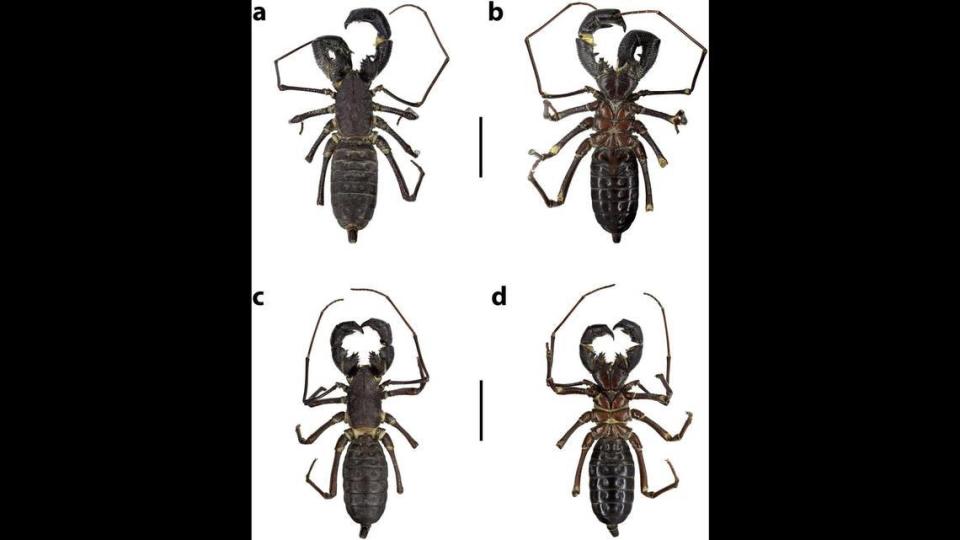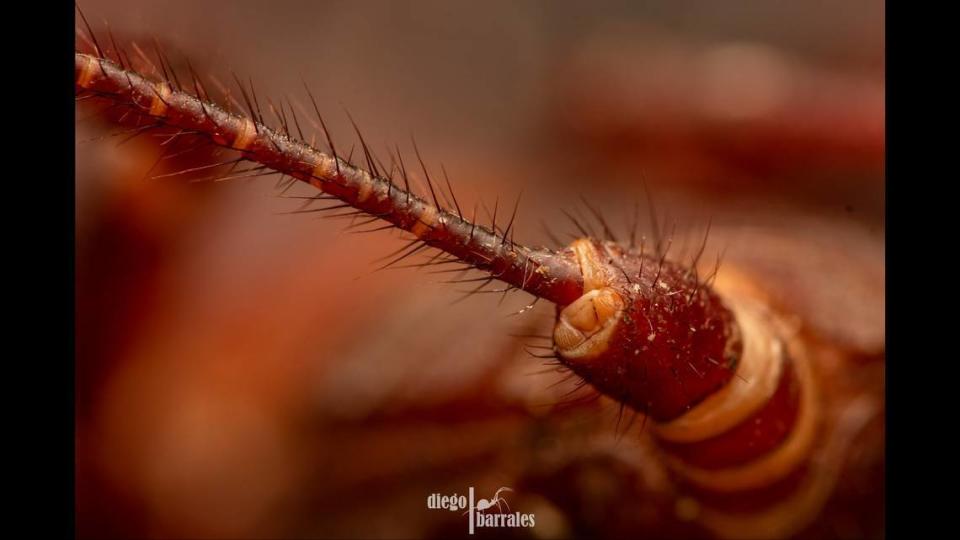A small creature It used its eight legs to hide under a rotten trunk of a treeI am in it Mexico’s most remote pine forest. In no time, it fell into the hands of a scientist.
Researchers were looking for “giant vinegars”. Also known as whip scorpion, When they stumbled upon the creature. They observed it closely and did many tests and concluded that it was a new species. Similarly, they identified two more A new species of scorpionsAccording to a study published on October 6 in the journal The Journal of Arachnology.

The new species is red to brown in color and only reaches a few inches in size. Specimens of M. branchae measure 2.1 to 2.5 inches, specimens of M. xetame, about 1.9 to 2.2 inches; and M between 2.2 and 2.3 inches.
No species is poisonous, One of the scientists, Diego Alejandro Barrales Alcala, wrote on X (formerly Twitter). Arachnids have a flagellum, which looks like a tail A mixture of water and acids can be expelled. Observers believe the creatures use this material as a defense mechanism to ward off predators.
Scientists have discovered that M. frankii lives in the rainforests of Xilitla and Aquismon, San Luis Potosí, Mexico. One of the study’s co-authors, Oscar F. The breed is named after Franke Paul.

M. xetame lives in pine and oak forests in Jalisco, Mexico, the report says. Specimens were collected under rocks and rotten tree trunks. Scientists have named the creature in the Huichol language, xetame, which means fair color.
According to experts, no living specimen of M. yalsanchak has been found, so they had to determine whether it is a new species with the help of museum specimens discovered decades ago. The species is named according to its size and color using the words “yal san” and “chuck” which mean small and red animal in the Tojolabal language.
Translated by Jorge Posada



:quality(85)/cloudfront-us-east-1.images.arcpublishing.com/infobae/DVLWJKBJAVKNNQUXRVYQP4UHUY.jpg)

:quality(85)/cloudfront-us-east-1.images.arcpublishing.com/infobae/5FJEKKQYBG5M5WULDQCGN67WQE.jpg)